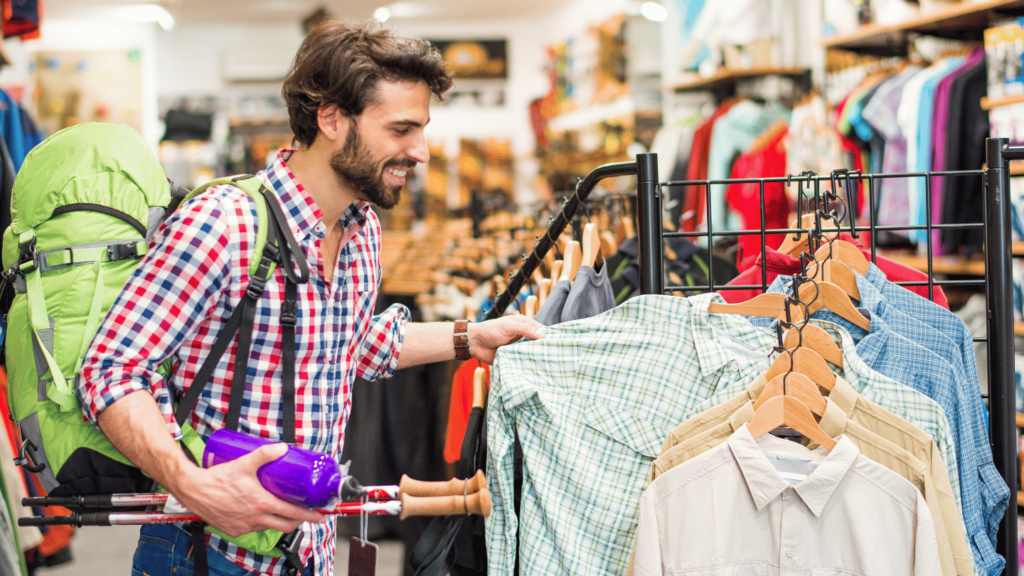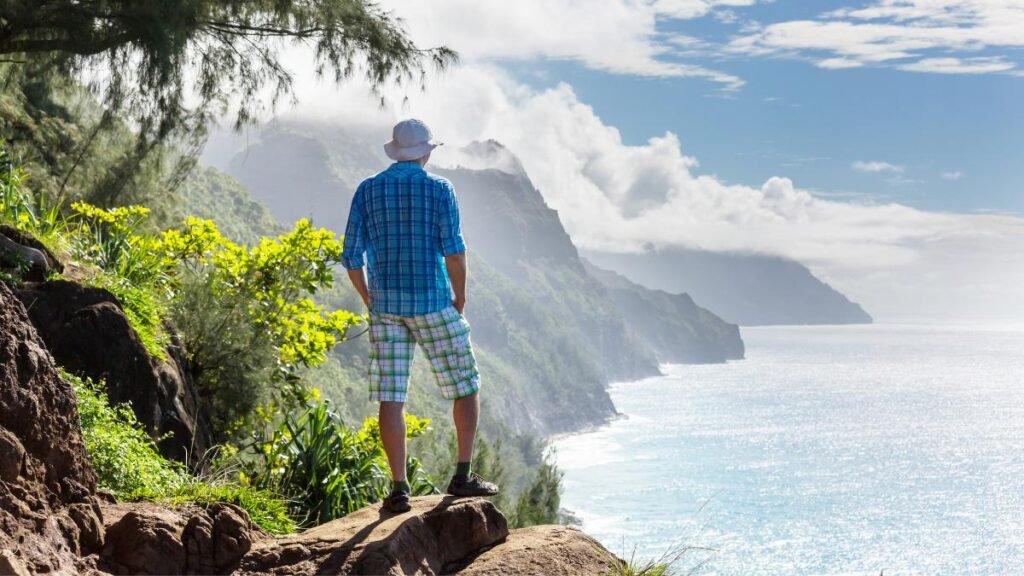While it brightens the path, the sun also brings invisible risks. As a hiker, you might worry about getting lost or an unexpected downpour, but there’s something just as crucial as a good pair of hiking boots: UV protection in your clothing.
Carry on reading to learn the importance of UV protection in hiking clothes and why you should prioritize it on your next trail adventure.
Why UV Protection is Important in Hiking Clothes

When you’re out on a trail, you’re exposed to the sun for hours. It’s not just a quick walk – sometimes you’re under the sun the whole day. UV protection in hiking clothes acts like a shield. It’s this kind of gear that helps block those harmful rays from reaching your skin.
And it’s not just about comfort, it’s about health too. By wearing the right hiking clothes, you help keep your skin safe now and down the road.
Here’s what you should remember:
- Why it matters: Sunburns and skin damage can happen even under cloudy skies.
- Clothes as a barrier: They physically block UV rays from getting to your skin.
- Long-term health: Reduces your chance of skin problems such as skin cancer later in life.
The Science Behind UV Protective Clothing
UV protective clothing is made with fabrics designed to block out the sun’s ultraviolet (UV) rays. They do this because the threads are woven super tight, making it harder for UV to pass through. Imagine you’re wearing a shield – that’s exactly what UPF-rated gear does for your skin.
Next time you pack for a hike, make sure you throw in some UV protection. It’s like sunscreen you can wear, and it doesn’t wear off!
Comparing UPF Clothing with Regular Hiking Clothes
UPF stands for Ultraviolet Protection Factor, and these clothes are like a shield against the sun. Let’s compare it with regular hiking clothes to see the difference.
Regular Cotton Shirt
- Might feel light, but doesn’t protect well.
- You get sweaty, and the UV protection gets even lower.
- Applying sunscreen under your shirt? Chances are, you’ll probably forget to reapply.
UPF-Rated Shirt
- Made to block out UV rays.
- Keeps protecting even when wet.
- No reapplication needed – wear it and forget it.
Types of UV Protective Clothing for Hiking
Here are some essential go-to pieces that can save your skin in various situations:
- Long-Sleeve Shirts: They may sound hot, but modern materials keep you cool and cover your arms completely.
- UV Protection Pants: These jeans are not your regular pair – they are designed to be lighter and quicker to dry, perfect for those on the go or in need of a practical and comfortable option. With their innovative fabric technology, you can enjoy the same stylish look of traditional jeans while experiencing enhanced functionality and convenience.
- Wide-Brimmed Hats: You get to shield your face, ears, and often even your neck.
- Buffs and Neck Gaiters: Pull them up or down as needed. They’re very versatile.
- UV Blocking Sunglasses: Just like our skin, our eyes also require protection from harmful elements.
So, what kind of clothing is best for UV protection? Go for clothes that cover more skin without making you overheat. Look for pieces labeled with UPF (that’s Ultraviolet Protection Factor) to be sure they’re made to block the sun.
Sun Protection in Different Hiking Environments

The sun’s power isn’t the same everywhere. In the mountains, for example, the UV is higher than on a regular trail. In fact, every time you go up another thousand feet, the UV levels shoot up by about 4%.
Imagine this: You’re walking along a path, steadily going up. A beach at sea level feels easier on your skin right?
Here’s why: At 5,000 feet elevation, the UV exposure can be 20% more intense than at the beach. That’s like stepping from a shady spot into direct sunlight in one go!
But it’s not just mountains. Even on an ordinary trail, with trees and valleys, you can’t take chances. Suppose you’re hiking through a forest in spring, thinking the leaves will protect you.
They do help, but UV can bounce around, finding sneaky ways to hit your skin. And let’s not forget the open fields where there’s nothing between you and the sun, especially when you’re crossing big, grassy meadows.
Here’re the key points to remember:
- Altitude: The higher you go, the harsher the UV rays.
- Environment: Forests and meadows offer very different kinds of sun protection.
- Protection: You always need sunscreen, sunglasses, and hats, no matter the trail.
Can UV Penetrate Through Clothes?

Yes, UV can penetrate through clothes. The extent to which UV rays can go through clothing depends on several factors such as the fabric’s:
- Tightness of weave
- Color
- Weight
- Stretch
- Wetness
A plain white T-shirt, for instance, has an Ultraviolet Protection Factor (UPF) that’s generally lower than specialized sun-protective clothing.
On the other hand, a fabric with a UPF rating of 50 allows only 1/50th of the sun’s UV rays to reach your skin. You can easily find this rating in hiking clothes available on the market.
How to Know If UV Penetrates Your Clothes?
It’s a simple test:
- Hold the fabric up to bright light.
- If you see light shining through, UV rays can penetrate it too.
- Don’t forget that wet clothing offers significantly less UV protection than dry clothing for most fabrics.
When preparing for your hiking trip, opt for clothing designed with sun safety in mind, or make sure that your clothes have a suitable UPF rating to protect yourself from the damaging effects of UV radiation.
Conclusion
When hiking under the sun’s piercing rays, proper clothing is your first line of defense. UPF-rated apparel offers reliable protection and peace of mind, making it possible for you to enjoy the great outdoors with less risk of skin damage or other UV-related health issues.
The right clothes do more than make a fashion statement on the trails – they might just save your skin. So gear up with UV protection in mind, and take on every trail with confidence, knowing you’re well-protected every step of the way.
Frequently Asked Questions
Do You Really Need UPF Clothing?
Yes, you need UPF clothing, especially if you hike where the sun hits hard. UPF clothing blocks the UV rays much better than your everyday cotton tee.
Does UV Clothing Really Work?
Yes, UV clothing really does work. Sun-protective clothing is specifically designed to block ultraviolet rays and serves as an effective form of protection against sun damage and skin cancer.
A study published in the journal Cancers reported that sun-protection clothing could be more effective than sunscreen at blocking UV rays, as sunscreen can wear off due to sweat, water, or improper application.
Unlike regular clothing, which may still let through significant UV rays, especially if light-colored or loosely woven, UPF-rated clothes have been tested even under conditions where the fabric is wet to ensure their protective qualities are maintained.
Is UPF Clothing Better Than Sunscreen?
There’s no need to reapply clothing every two hours, and you won’t risk missing a spot. That’s why UPF clothing is the clear winner over sunscreen.
Keep in mind, the higher the UPF rating, the greater the level of protection. Seek out UPF 50 – that’s where the real benefits lie.
Do UV Rays Go Through Jeans?
Yes, UV rays can go through jeans, but they generally offer better protection than lighter fabrics. All fabrics provide some level of UV protection, and denim, with its tight weave and typically heavier weight, tends to block more rays compared to many other types of fabric.
Jeans are less likely to allow rays to penetrate because they are usually made from a dense material which diminishes the amount of UV radiation that can pass through.
However, it might not block 100% of UV rays, so wearing additional sun protection is still advisable, especially if you’re going to be in the sun for an extended period.
What UV Protection for Hiking?
- Sunscreen: Apply a broad-spectrum sunscreen with at least SPF 15, preferably SPF 30 or higher for extended outdoor activities. Sunscreen should be applied half an hour before exposure and reapplied every two hours, or more frequently if sweating or swimming. Products with higher SPF like SPF 70 can block about 98.5% of UVB rays.
- Protective Clothing: Invest in clothing specifically designed for sun protection. Look for garments with a UPF rating, such as the Columbia PFG line, which indicates the fabric’s effectiveness against UVA and UVB rays. High-rated UPF clothing offers significant protection and can be more reliable than sunscreen alone.
- Hats and Headwear: Wear a wide-brimmed hat to provide shade and protect areas such as the face, neck, and ears. A sun hoodie can also offer additional coverage for your head and neck.
- Eye Protection: Sunglasses that offer 100% UV protection will help shield your eyes from UVA and UVB radiation and prevent damage.
- Accessories: For parts of the body still exposed to the sun, consider using accessories like sun gloves or arm sleeves, especially in highly reflective environments where UV exposure is intensified.
- Shade: An umbrella can offer portable shade, significantly reducing UV exposure to your upper body and providing a cool spot to rest during breaks.





